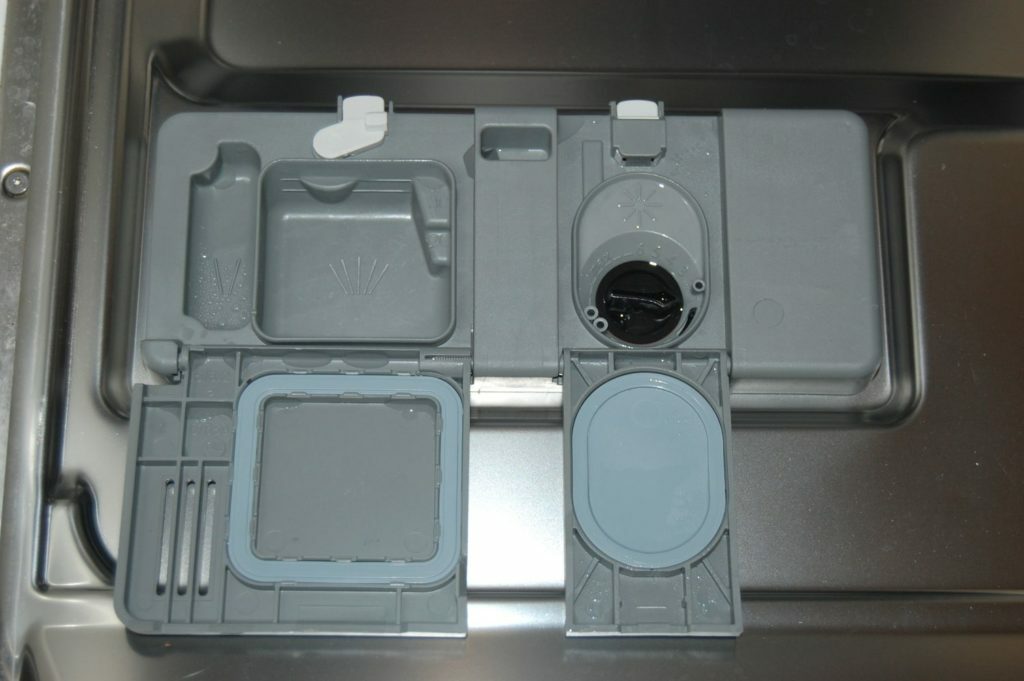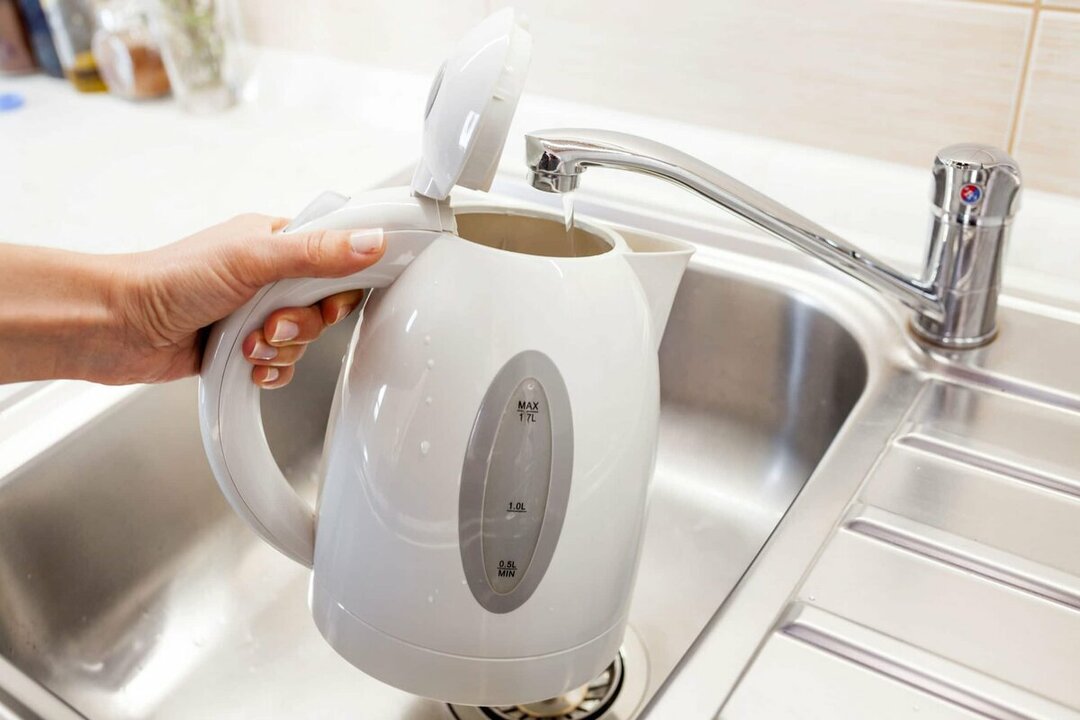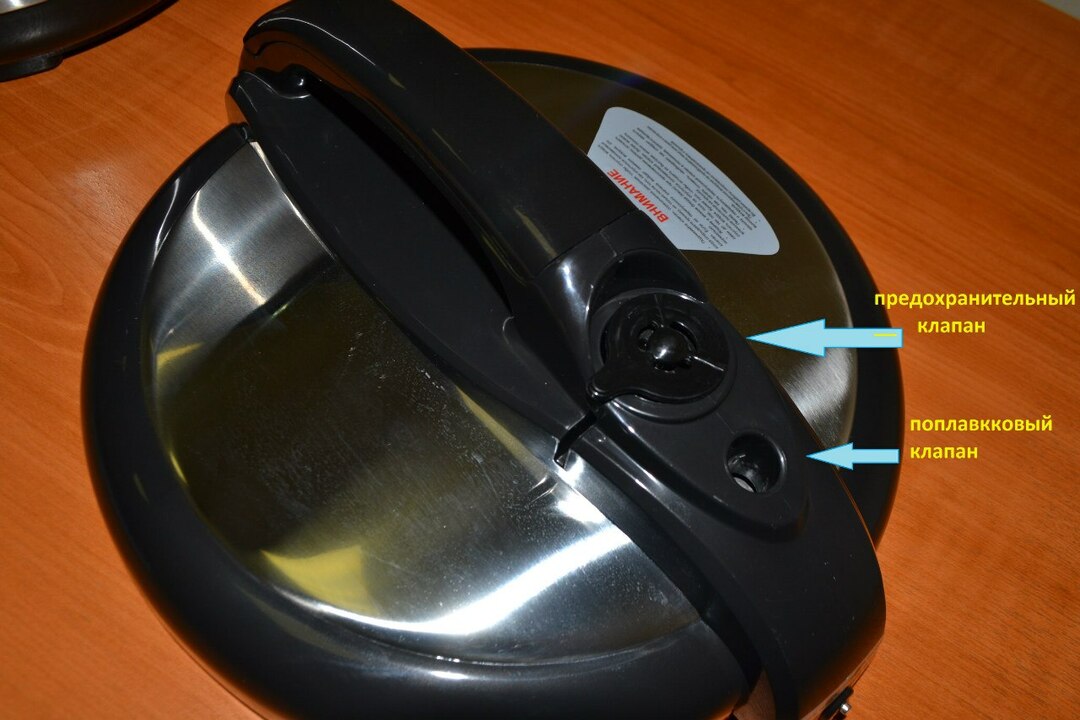When food is cooked on the stove or in the oven, odors spread throughout the kitchen and throughout the house. Often not very pleasant. And this is not the only problem. Together with odors, harmful substances are released into the air, grease is sprayed, and steam is formed. To avoid this, not to hear the smell of cooking food, it is recommended to install a hood.

Image taken from https://www.youtube.com/watch? v = mgSbYJG4FvA
Before purchasing, it is worth studying their features and finding out the permitted height of the hood above the hob. Its performance and comfortable use depend on the correct installation. It is especially important to correctly determine the height of the hood above the gas stove, since this is a source of open fire and, accordingly, is the most dangerous type of device.
What is the effect of the distance between the stove and the hood
Initially, you should plan the distance between the hob and the hood. This technique works in a team and there are a number of requirements according to which it is worth matching them to each other: the hood should be equal to the stove or be slightly wider. And the number of speeds and the performance of the air purification mechanism depends on the number of burners and the type of device.
Attention! Earned on our website kitchen designer. You can familiarize yourself with it and design your dream kitchen for free! May also come in handy wardrobes designer.
You also need to correctly calculate the mounting height. In any instruction there are clear recommendations from the manufacturer in this regard. If they are not observed, you should not expect high-quality work from the unit:
- Too low position can cause fire or smoldering soot. It accumulates in filters over time. Therefore, the close proximity of fire to the decomposition products of combustion is dangerous by fire.
- It will be inconvenient for a person of tall or short stature to cook: you can hit the head of the device, there is difficulty in cleaning due to difficult access.
- Maintenance will also make it difficult to change and clean the filter.
- The absorption radius of the emissions at low cuts will be smaller, which will affect the result of the work.
- If the setting is too high, the suction efficiency will decrease, and it will be necessary to operate the device at maximum power.
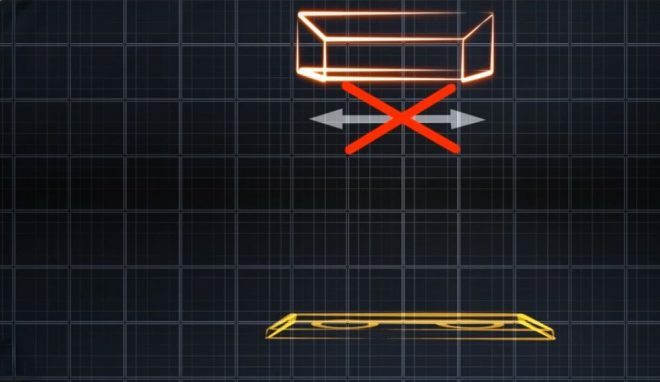
Image taken from https://www.youtube.com/watch? v = mgSbYJG4FvA
When installing, it is worth considering some parameters that affect the installation options:
- the performance of the unit, on which the efficiency of work depends;
- type of device, its distinctive features;
- the general appearance of the device should be in harmony with the interior and dimensions of the kitchen;
- the height of a person using kitchen appliances.
Before purchasing, preliminary calculations should be made of at what height to hang the hood over an electric stove or gas surface. The requirements are different and must be taken into account. Even before buying, you should study all the characteristics of the device: how it is installed, how the processed air is removed. In the store, consult the seller for any questions you may have.
Types of kitchen hoods
When planning a kitchen interior or buying a model for an existing headset, you need to take into account the distance from the hood to the gas stove and the work surface (countertop). The minimum is the height of the hood above the induction hob, since there is no open fire.
In any case, when choosing an air receiver, you should understand how it works. The differences boil down to several points.
According to the type of used air removal, the hoods are subdivided into:
- Flow-through - they lead the exhaust air through the internal filters and discharge it into the ventilation duct. In typical kitchens, this is the best option.
- In a room where ventilation is not provided, the circulation type recycles air and returns it back.
- Flow-circulation, which combine both properties. The user himself can select the function at the moment by pressing the desired button in advance.

Image taken from https://www.youtube.com/watch? v = mgSbYJG4FvA
The installation method also affects the hood height:
- The dome is attached directly to the wall. Its installation does not cause any particular difficulties.
- Built-in is installed directly into the body of the upper cabinet. When assembling a kitchen unit, assemblers can mount it together with other built-in appliances. But you need to know the dimensions at the time of ordering the kitchen, since the designers take these parameters into account at the project stage.
- Corner, as the name suggests, is placed on the side, under the hob, which significantly saves space on the kitchen countertop.
- The island type is mounted to the ceiling. For ease of use, compliance with safety precautions and aesthetics, a section with a hidden air duct and wires should be foreseen in the repair process.
Distance from stove and hood
Before calculating the distance to the hood, it is worth choosing the type of air inlet. They are parallel to the plate (horizontal), or at an angle (inclined). What are the differences between their work? The horizontal one is at an angle of 90 degrees, and all the steam, smell, small splashes of fat are absorbed much easier. The vertical looks attractive, but sometimes it needs to be turned on at high power to improve work efficiency. But using this type of technique is much more convenient - it is excluded that the head will touch the body.
After the selection of the unit, calculations are made of at what height to hang the hood above the gas stove. A common mistake after buying kitchen appliances is missing or skipped the identification step the minimum distance from the hood to the gas stove, which will certainly entail unnecessary costs.
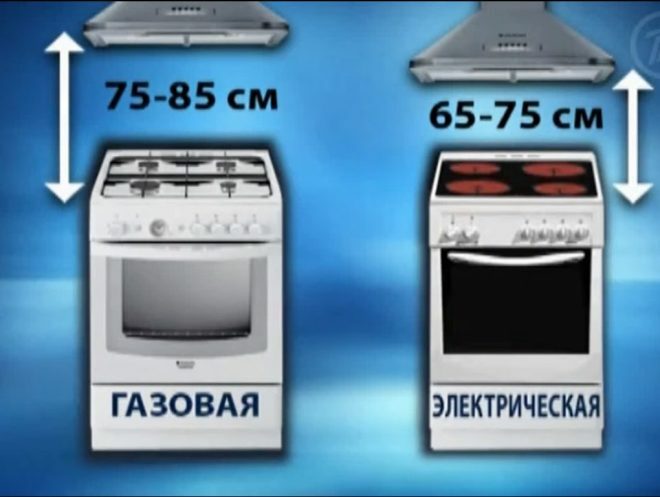
Image taken from https://www.youtube.com/watch? v = Nb0o7q_P4IM
Equipment manufacturers attach wiring diagrams to their product. There you will find recommendations for measurements and approximate calculations. To understand at what distance the hood of your model should hang from the gas stove, you need to know the type of inclination of the air inlet.
Horizontal and inclined devices are mounted at different heights. The first is located parallel to the gas burners, therefore it must be placed higher than the inclined one. The latter is allowed to be fastened slightly lower.
Inclined hoods
These are wall-mounted devices, most often compact and with the most interesting design. The height of the inclined hood from the stove is determined by several parameters - the size of the room and the type of hob. The height of a person does not play a special role here, since the risk of hitting the body with his head is minimal. Therefore, these devices are best suited for tall ones.
The guideline at what height to hang the inclined hood above the gas stove comes primarily from the design of the headset and the manufacturer's instructions. The calculation is based on the gap between the bottom edge of the air inlet and the burners.
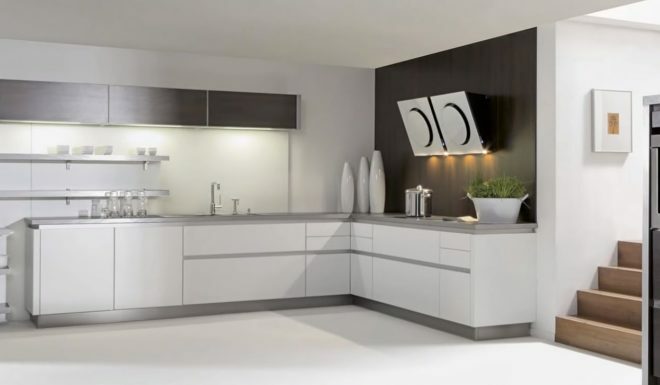
Make sure that it does not exceed 55 cm. Although the risk of fire is minimal here, it still exists. Plus, from exposure to open fire and high temperatures, some parts of the hood can melt or become unusable. But it is impractical to install above 65 cm. In such a case, a large suction power may be required. For an electrical surface, the norm is 35-45 cm. There are fewer risks here, so the requirements are reduced.
Horizontal devices
These are low, often flat devices that can work in any room. For the classic horizontal type, the distance of the hood from the stove is calculated based on the type of hob. The norms are different here. Above the gas burners, the air inlet is located above the lower part of the hinged housing, approximately 65-85 cm. And if you have an electric option, then the hood is allowed to be mounted flush with the upper kitchen cabinets. The same applies to the built-in device. Here, the height of the kitchen hood above the stove is allowed a little lower - from 60 to 80 cm.
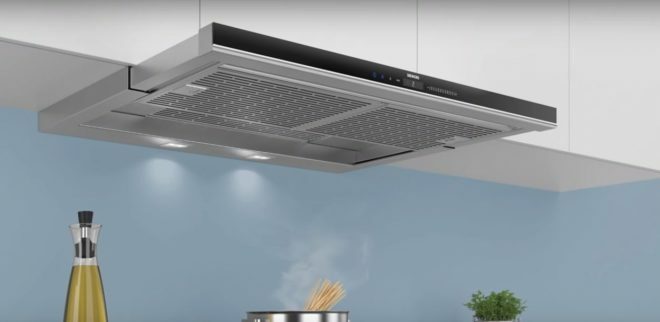
How to measure distance correctly
It is necessary to independently measure the height of the hood installation above the stove in compliance with a number of requirements. First, before installation, it is worth simulating the supposed process of work: bend over to the last burners, try to put a heavy saucepan. It is best to do this with an assistant.
Mark on the wall the minimum distance at which you can use the equipment without any problems. Further, according to the norms of the distance from the hob to the hood, measure the recommended height on the wall. The lower point will be the hob itself, and the upper one will be the hood filter. The bottom of the tilt device is taken into account. The final measurement will be obtained based on the average values of the norms and ease of use.
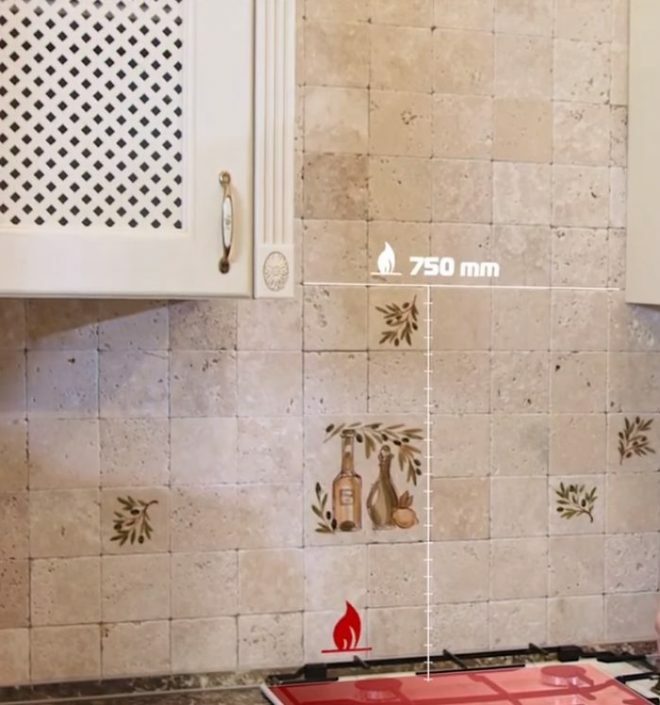
Image taken from https://www.youtube.com/watch? v = kPFA9RAhYAU & t = 269s
Important rules for installing the hood
If you are going to independently mount the air inlet, study in advance the rules that govern the installation. This is especially true for the norms and requirements for the height of the hood above the gas stove:
- The width of the hood and the size of the cooker should always be the same for optimal performance of their functions, or be slightly larger. The main requirement is not narrower than a stove.
- According to standards, the distance from the hood to the stove depends on the type of hob specified in the instruction manual.
- Install the socket to which the device is connected as far from the stove as possible. It is good when it is located above the kitchen unit or hidden behind the cabinet doors. Place the wires away from sources of ignition.
- There should not be many corners and turns in the box itself and in the place where the hood is connected to the duct. Otherwise, the air, meeting many obstacles, will leave with difficulty and unnecessary noise.
- Observe the norms for the height of the hood above the gas stove, which are described in the instructions for the technique in order to avoid a fire. There are no general boundaries for the distance according to GOST from the gas stove to the hood in the kitchen, but they exist for each manufacturer. You can get acquainted with them in the operation manual. It is worth adhering to exactly these recommendations when determining the height of the hood above the gas stove.
- In the absence of a ventilation shaft, the circulation option should be chosen. It is much easier to mount it.

Image taken from https://www.youtube.com/watch? v = mgSbYJG4FvA
Step-by-step installation of the hood above the gas stove
When planning an independent installation, you need to understand all the nuances in advance and prepare for work. Since the distance from the gas stove to the hood in the kitchen is not determined in accordance with GOST, the manufacturer's instructions are taken into account. In them, in addition to calculating the installation height when installing the hood above the gas stove, possible mounting options are listed. Considering all the points, it will not be difficult to assemble the equipment yourself.
Preparation for installation work
Before installation, you need to properly prepare for it:
- According to the manufacturer's instructions, we check the presence of all parts and elements of the device, evaluate their appearance. This stage will allow you to return a defective copy or missing components on time.
- We evaluate the reliability of the surface for fastening, as well as whether there are gas communications nearby. If they interfere with installation, you should think about moving them or installing the device on a bracket.
- We make the necessary measurements and finally determine at what distance the hood should be located above the gas stove.
- If you plan to install a plastic air duct, then you will need to add an adapter. It is required when the duct and outlet openings do not match.
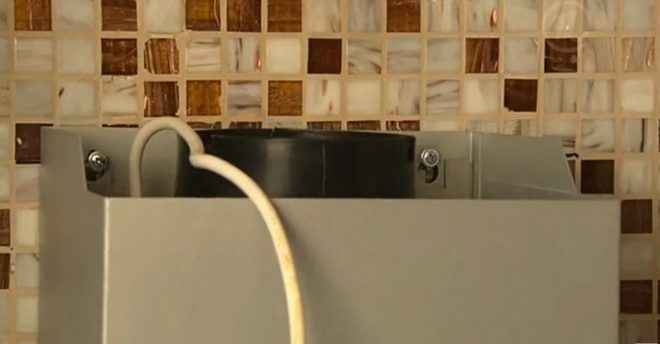
Image taken from https://www.youtube.com/watch? v = Nb0o7q_P4IM
Mounting the hood above the gas stove
If the duct is angled, horizontal or domed, its casing is mounted to the wall. The set for the device usually contains a template for mounting, where the attachment points are marked. It only needs to be attached to the surface and marked.
If there is no template, it is necessary to attach the case at the required height of the hood installation above the gas stove, and mark the holes. Most often, four mounting slots are made. Next, drill holes in the wall according to the marks and fix the dowel plugs in them. The enclosure can now be hung on the dowels.
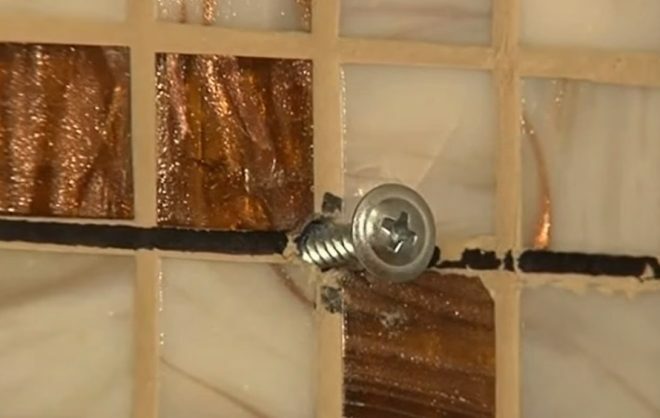
Image taken from https://www.youtube.com/watch? v = Nb0o7q_P4IM
If the installation of built-in appliances is required, then it is fixed in the same way, but only to the walls of the cabinet. The dimensions of the upper cabinets of the headset are also taken into account here. It is necessary to correlate their dimensions with the norms to accurately determine at what height to hang the hood above the gas stove.
Connecting the hood to the ventilation system
The next step is to connect the air inlet to the ventilation system. For these purposes, a suitable air duct should be selected. They are:
- Corrugated aluminum. Lightweight and flexible material, cheaper than its plastic counterparts, but more noisy.
- Plastic PVC. They can be round or rectangular. They are ergonomic, less noisy, and adapters allow you to create any bend in the structure.
Supplement the air duct with a special grill if there is only one ventilation hole in the room. It has slots in its housing for free air outflow, regardless of the connected ventilation duct. The instructions describe all the nuances of the connection. Next, after determining the height of the exhaust hood above the gas stove, fixing the air inlet housing and connecting it to the ventilation, the unit is plugged into an outlet.
Connecting the equipment to the mains
The device is connected to a regular outlet. Check for grounding. All modern models are immediately equipped with a plug, but if it is not there, then this can be done using the terminal block. Wires that cannot be hidden behind the housing are placed in the cable channel. Based on the height at which the hood is installed above the gas stove, an outlet is mounted. It must be located as far as possible from open flames to avoid fire.
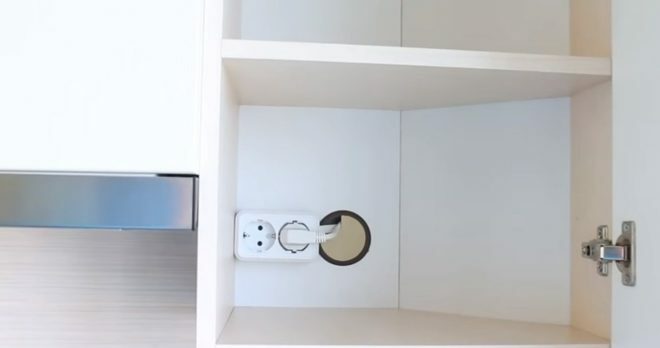
The main mistakes when installing the hood
In order for the air receiver to work efficiently and without interruptions, a number of mistakes should be avoided, which are often encountered with improper installation:
- Connecting the air duct to a single ventilation duct. This is the most common mistake of amateur craftsmen. In order not to disrupt the natural ventilation process, when connecting the air duct, you must use a duct with a grate and a non-return valve.
- Failure to comply with the recommended distance between the stove and the hood. Too high reduces the performance of the device, and too low increases the risk of fire and device failure.
- Too many bends near the duct increase the noise level and disrupt the flow, especially if they go one after the other.
- Inadequacy of the equipment power to the ventilation duct capable of passing a smaller volume of air.
- You can not independently lead the air duct through the wall directly to the street. This is prohibited by law.
- Incorrect installation of the non-return valve will cause the hood to malfunction.
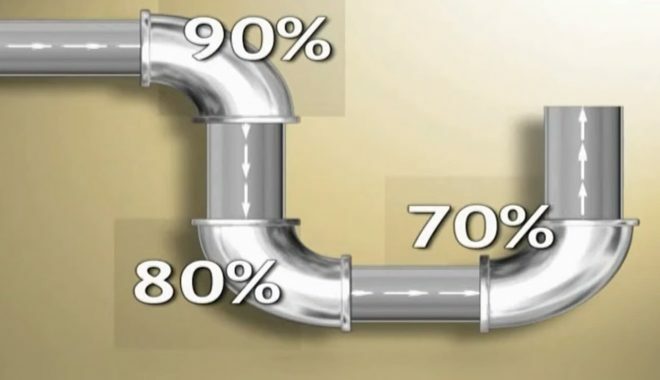
Image taken from https://www.youtube.com/watch? v = Nb0o7q_P4IM
Before planning the purchase of a furniture set, it is important to consider what height of the hood above the stove will be optimal. After all, the correct installation affects not only the quality of the unit, but also ensures the safety of the family. Therefore, the best solution would be to follow the manufacturer's recommendations and avoid common mistakes.
average rating 5 / 5. Number of ratings: 1
No ratings yet. Be the first to rate.
